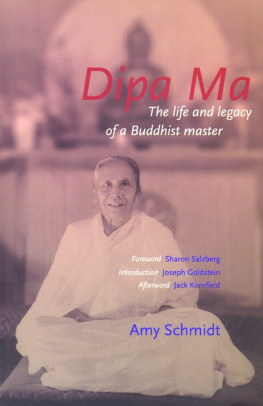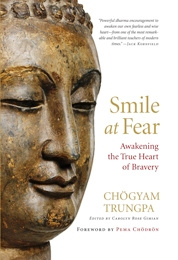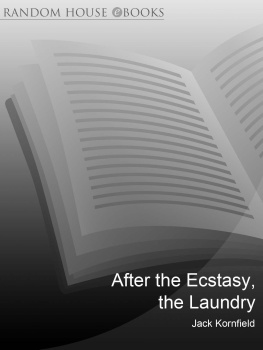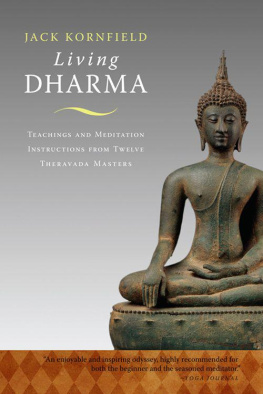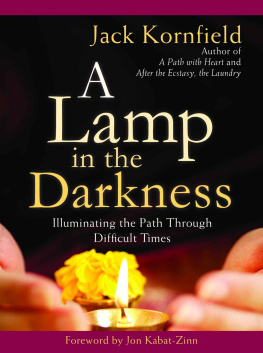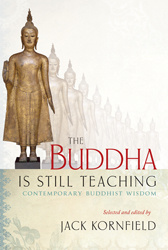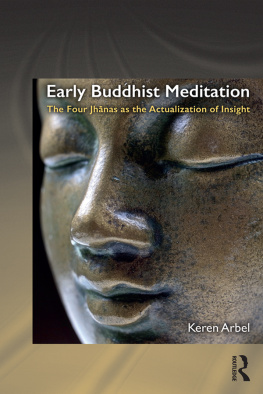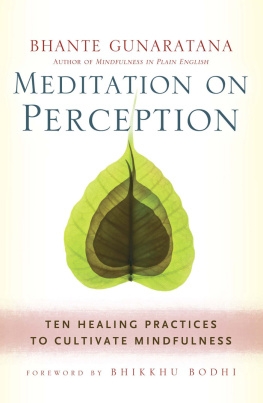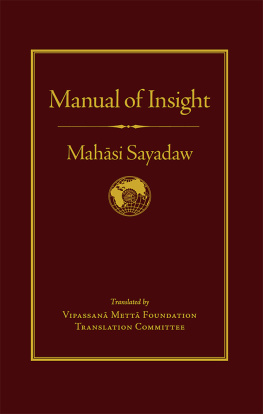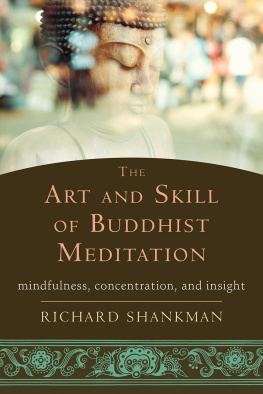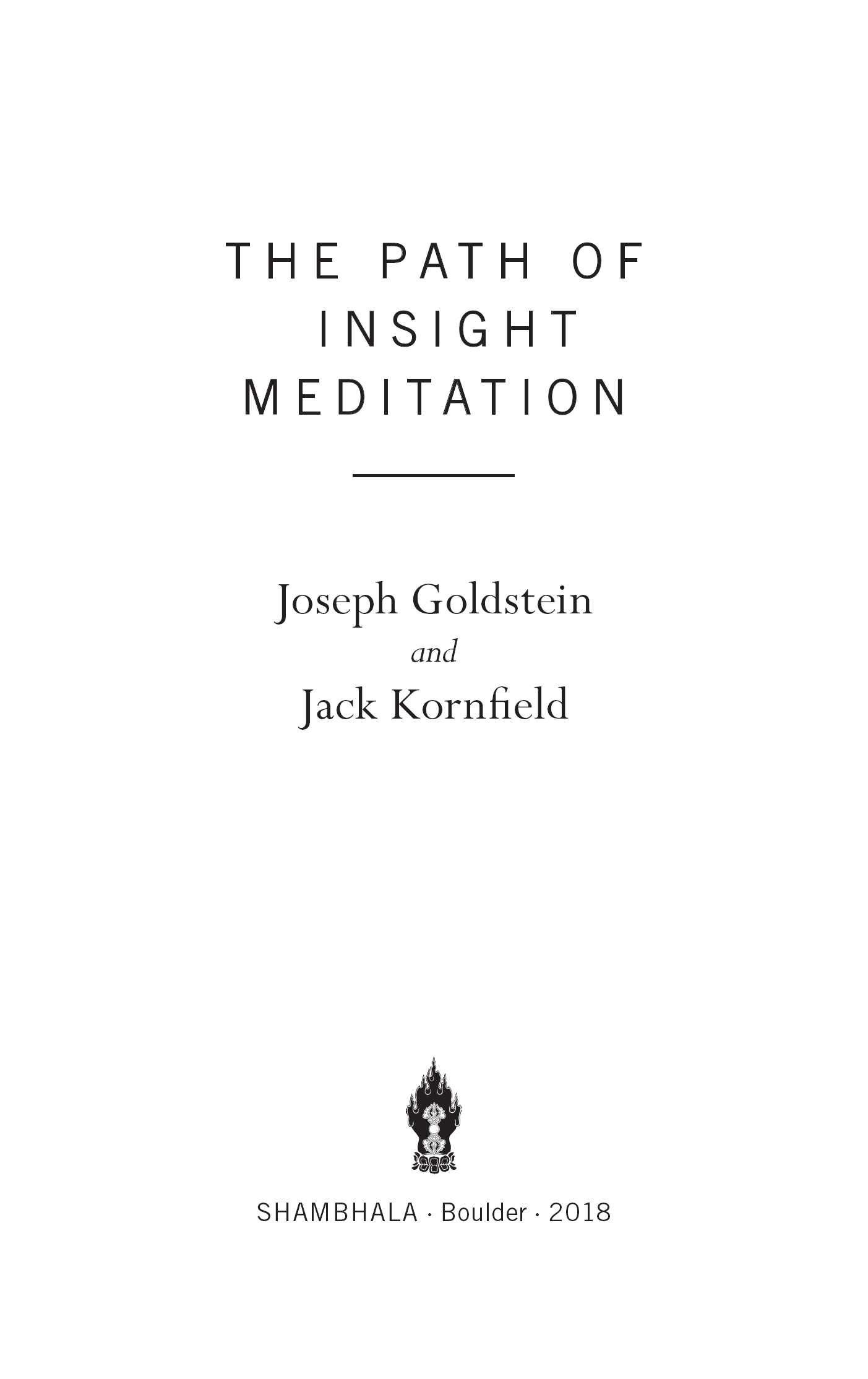1
DISCOVERING THE HEART OF MEDITATION
It is said that soon after his enlightenment, the Buddha passed a man on the road who was struck by the extraordinary radiance and peacefulness of his presence. The man stopped and asked, My friend, what are you? Are you a celestial being or a god?
No, said the Buddha.
Well, then, are you some kind of magician or wizard?
Again the Buddha answered, No.
Are you a man?
No.
Well, my friend, what then are you?
The Buddha replied, I am awake.
The name Buddha means one who is awake, and it is this experience that is the very heart and essence of vipassana, or insight meditation. It offers a way of practice that can open us to see clearly our bodies, our hearts, our minds, and the world around us and develop a wise and compassionate way to relate to and understand them all. This practice of insight meditation comes from the original core of the Buddhas teachings as transmitted for 2,500 years in the Theravada tradition of southern Asia. But it is not an Asian practice. It is a practice by which anyone can awaken to the truth of life and become free.
R IGHT U NDERSTANDING
The path of awakening begins with a step the Buddha called right understanding. Right understanding has two parts. To start with, it asks a question of our hearts. What do we really value, what do we really care about in this life? Our lives are quite short. Our childhood goes by very quickly, then adolescence and adult life go by. We can be complacent and let our lives disappear in a dream, or we can become aware. In the beginning of practice we must ask what is most important to us. When were ready to die, what will we want to have done? What will we care about most? At the time of death, people who have tried to live consciously ask only one or two questions about their life: Did I learn to live wisely? Did I love well? We can begin by asking them now.
This is the beginning of right understanding: looking at our lives, seeing that they are impermanent and fleeting, and taking into account what matters to us most deeply. In the same way, we can look at the world around us, where there is a tremendous amount of suffering, war, poverty, and disease. Hundreds of millions of people are having a terrible, terrible time in Africa and Central America and India and Southeast Asia and even right here in North America. What does the world need to foster a safe and compassionate existence for all? Human suffering and hardship cannot be alleviated just by a simple change of government or a new monetary policy, although these things may help. On the deepest level, problems such as war and starvation are not solved by economics and politics alone. Their source is prejudice and fear in the human heartand their solution also lies in the human heart. What the world needs most is people who are less bound by prejudice. It needs more love, more generosity, more mercy, more openness. The root of human problems is not a lack of resources but comes from the misunderstanding, fear, and separateness that can be found in the hearts of people.
Right understanding starts by acknowledging the suffering and difficulties in the world around us as well as in our own lives. Then it asks us to touch what we really value inside, to find what we really care about, and to use that as the basis of our spiritual practice. When we see that things are not quite right in the world and in ourselves, we also become aware of another possibility, of the potential for us to open to greater loving kindness and a deep intuitive wisdom. From our heart comes inspiration for the spiritual journey. For some of us this will come as a sense of the great possibility of living in an awake and free way. Others of us are brought to practice as a way to come to terms with the power of suffering in our life. Some are inspired to seek understanding through a practice of discovery and inquiry, while some intuitively sense a connection with the divine or are inspired to practice as a way to open the heart more fully. Whatever brings us to spiritual practice can become a flame in our heart that guides and protects us and brings us to true understanding.
Right understanding also requires from us a recognition and understanding of the law of karma. Karma is not just a mystical idea about something esoteric like past lives in Tibet. The term



